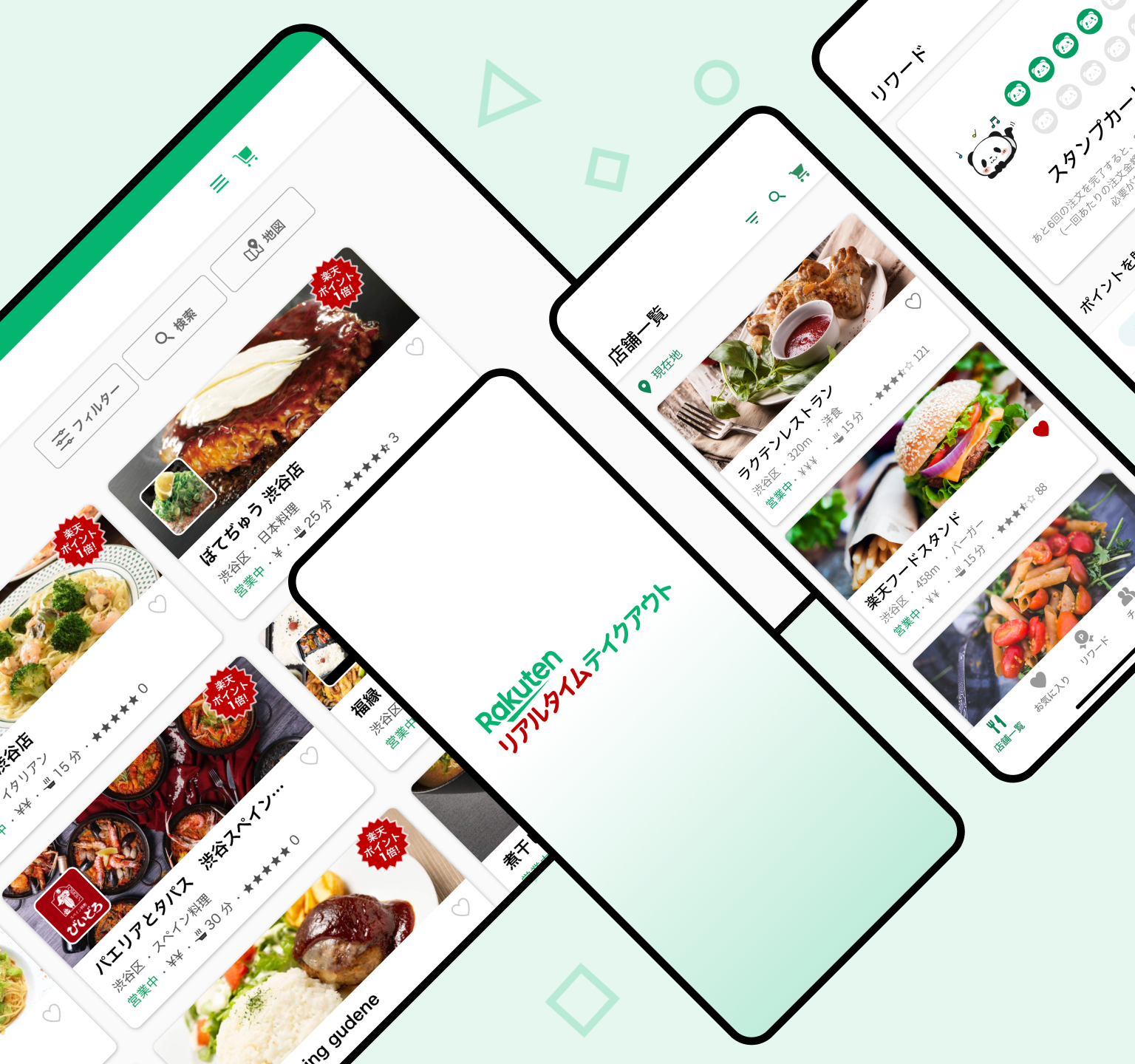DESIGN DIRECTION & PRODUCT MANAGEMENT
2019 - 2021
Rakuten Group, Inc.
About
Rakuten and Takeout service
Rakuten Group, Inc. is a global leader in internet services, headquartered in Japan. Founded in 1997, it has grown into one of the largest e-commerce companies in the world, offering a diverse range of services, including online shopping, fintech, digital content, and telecommunications.
Rakuten Takeout, launched in 2020 as part of the Rakuten ecosystem, offers users a convenient way to order takeout from participating restaurants, cafes, and eateries. Later releases introduced an app featuring ‘group ordering,’ allowing multiple users to combine their orders into one for a smoother and more efficient pickup experience.
My Contributions
Design Direction
UIUX Design
Product management
My Work Across Project Phases
I joined Rakuten Group, Inc. in August 2019 and was quickly involved in building a brand-new takeaway ordering platform for the Rakuten e-commerce ecosystem. This project not only deepened my product development skills from an in-house perspective but also presented unique challenges.
Navigating complex stakeholder dynamics, adapting designs within technology constraints, responding quickly to the COVID-19 crisis, and collaborating across continents tested my adaptability and problem-solving abilities.
To keep things effective, I collaborated closely with multiple teams (marketing team, business development team, customer success team, engineers, legal team, branding team, governance team, etc.) to align goals, tackle feasibility concerns, and foster flexible working approaches. My role can be summarized into three phases:
Phase 1 – Introducing a new concept of team ordering to enhance the takeout experience.
Phase 2 – Pivoting to help small restaurants go online during the pandemic.
Phase 3 – Iterative design enhancements aligned with changing organizational strategies.
Phase 1
Bring ‘team’ into ordering experience
Aug 2019 - Mar 2020
At this phase, the team was at the initial stage of defining the concept and convert it into UIs.
Goals
Consumers: Bring the new concept of “team order” to takeoutorder experience to help office workers save time for their lunch on weekdays
Merchants: A simple and easy-to-operate order management interface to meet the needs of merchant staff
My Role: User and product research, product management, design direction
Outputs
For consumer-facing service: Competitive product research, design direction, prototype, user test, design assets, UX copy
For merchant-facing service: Created customer journey map with customer success team, feasibility check with development team, make priority decision together with other product manager, design direction, support decision making on UX copywritings
Phase 2
Support both customers and small restaurants during COVID-19
Apr 2020 - Nov 2020
During covid-19, as everyone was gradually shifting to working from home, the program adjusted its original strategy of focusing on downtown and office areas and decided to focus its main goal on supporting stores to quickly build their online pages and help them connect to customers faster.
Goals
Consumer: Quickly launch the web version to support people’s daily life during the first emergency state
Merchant: Provide a smooth registration process to help stores go online easily while reducing back office support
My Role: Product management, design direction, user test planning and preparation
Outputs
Task scenarios for user test, UX improvements based on test results and performance data, design deliverables for marketing activities
For consumer-facing service: Launched website on May 2020, and launched app (with updated team order feature) on Oct 2020
For merchant-facing service: Launched restaurant online registration site, order console on May 2020
Phase 3
Update consumer-facing product based on organization strategy adjustment
Dec 2020 - May 2021
Following the strategic realignment of Rakuten to host this platform, the brand definition of the entire platform needs to be aligned with its partners. At this stage, my main task was to work directly on integrating all design files to unify the design languages and align with new brand identity.
Goals
UX improvement and adapt the entire design to the new brand and the new development environment while maintaining the original user flow
My Role: UIUX Design
Outputs
Wireframe, UI/UX design deliverables, Design specs documents
Key Takeaways
User-Centric Design with Real-World Trade-Offs: In large organizations like Rakuten, UX design remains user-focused, but balancing user needs with business, technical, and operational constraints often requires trade-offs.
Communication is Crucial: Effective cross-team collaboration hinges on strong communication. Investing time to build mutual trust and clear understanding between teams significantly improves outcomes.
Know the Legal Landscape: Understanding company-specific legal requirements—such as information display standards, user privacy considerations, and industry regulations—is essential for creating compliant and effective designs.
Early Feasibility Assessments: Evaluating the feasibility of ideas early in the process helps prevent roadblocks later on and ensures a smoother design and development journey.



